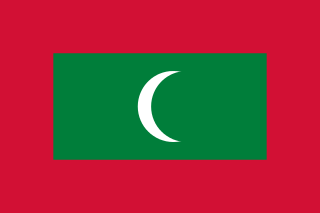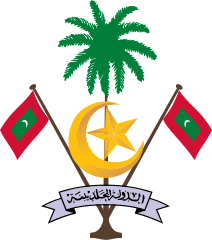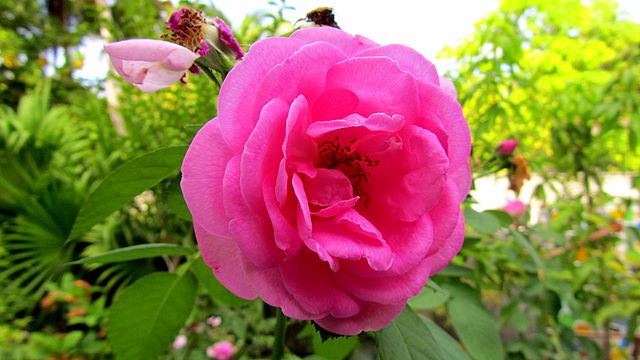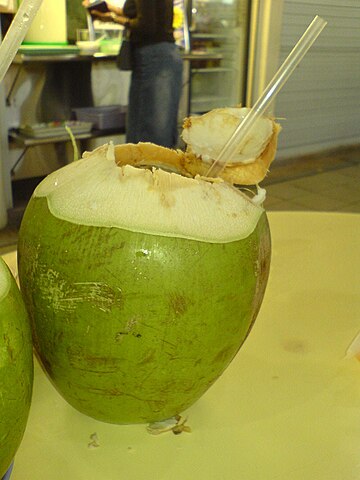Maldives






The Maldives, is a South Asian island country, located in the Indian Ocean, situated in the Arabian Sea. It lies southwest of India and Sri Lanka. The chain of twenty-six atolls stretches from Ihavandhippolhu Atoll in the north to the Addu City in the south. Comprising a territory spanning roughly 298 square kilometres (115 sq mi), the Maldives is one of the world’s most geographically dispersed countries, as well as the smallest Asian country by both land area and population, with a little over 393,500 inhabitants. Malé is the capital and most populated city, traditionally called the “King’s Island” for its central location.
The Maldives have been historically and culturally linked to the Indian subcontinent since the fourth century BCE. The Maldivian archipelago was Islamised in the 12th century and consolidated as a sultanate, developing strong commercial and cultural ties with Asia and Africa. From the mid 16th-century, the region came under the increasing influence of colonial powers, with the Maldives becoming a British protectorate in 1887. Independence from the United Kingdom was achieved in 1965 and a presidential republic was established in 1968 with an elected People’s Majlis. The ensuing decades have been characterised by political instability, efforts at democratic reform, and environmental challenges posed by climate change.
The Maldives is a founding member of the South Asian Association for Regional Cooperation (SAARC). It is also a member of the United Nations, the Organization of Islamic Cooperation and the Non Aligned Movement. The World Bank classifies the Maldives as having an upper middle income economy. Fishing has historically been the dominant economic activity, and remains the largest sector by far, followed by the rapidly growing tourism industry. Along with Sri Lanka, it is one of only two South Asian countries rated “high” on the Human Development Index (HDI), with its per capita income the highest among SAARC nations.
Climate
The Maldives has a tropical monsoon climate (Am) under the Köppen climate classification, which is affected by the large landmass of South Asia to the north. The presence of this landmass causes differential heating of land and water. These factors set off a rush of moisture-rich air from the Indian Ocean over South Asia, resulting in the southwest monsoon. Two seasons dominate Maldives’ weather: the dry season associated with the winter northeastern monsoon and the rainy season which brings strong winds and storms.
The shift from the dry northeast monsoon to the moist southwest monsoon occurs during April and May. During this period, the southwest winds contribute to the formation of the southwest monsoon, which reaches Maldives in the beginning of June and lasts until the end of August. However, the weather patterns of Maldives do not always conform to the monsoon patterns of South Asia.
Tourism
The Maldives remained largely unknown to tourists until the early 1970s. Only 185 islands are home to its 300,000 inhabitants. The other islands are used entirely for economic purposes, of which tourism and agriculture are the most dominant. Tourism accounts for 28% of the GDP and more than 60% of the Maldives’ foreign exchange receipts. Over 90% of government tax revenue comes from import duties and tourism-related taxes.
The development of tourism fostered the overall growth of the country’s economy. It created direct and indirect employment and income generation opportunities in other related industries. The first tourist resorts were opened in 1972 with Bandos island resort and Kurumba Village (the current name is Kurumba Maldives), which transformed the Maldives economy.
According to the Ministry of Tourism, the emergence of tourism in 1972 transformed the economy, moving rapidly from dependence on fisheries to tourism. In just three and a half decades, the industry became the main source of income. Tourism was also the country’s biggest foreign currency earner and the single largest contributor to the GDP. As of 2008, 89 resorts in the Maldives offered over 17,000 beds and hosted over 600,000 tourists annually.
The number of resorts increased from 2 to 92 between 1972 and 2007. As of 2007, over 8,380,000 tourists had visited Maldives.
Visitors to the Maldives do not need to apply for a visa pre-arrival, regardless of their country of origin, provided they have a valid passport, proof of onward travel, and the money to be self-sufficient while in the country.
Airport
Most visitors arrive at Malé International Airport, on Hulhulé Island, adjacent to the capital Malé. The airport is served by flights to and from India, Sri Lanka, Doha, Dubai, Singapore, Istanbul, and major airports in South-East Asia, as well as charters from Europe. Gan Airport, on the southern atoll of Addu, also serves an international flight to Milan several times a week. British Airways offers direct flights to the Maldives around 2–3 times per week.
Source : wikipedia
Visa Requirements for Maldives
https://goo.gl/69auCF
Plug sockets used in Maldives are :
On the Maldives the power plugs and sockets are of type D and G. The standard voltage is 230 V and the standard frequency is 50 Hz.
The Type G electrical plug is a British three-pin rectangular blade plug that has a protective fuse inside to protect cords from high-current circuits. Type G outlets generally include safety switches.
The Type D electrical plug is also known as the Old British Plug. It has three large round pins in a triangular configuration
Currency : The currency of the Maldives is the rufiyaa (Rf), which is divided into 100 larees. Notes come in denominations of 500, 100, 50, 20, 10, five and two rufiyaa,
https://www.youtube.com/watch?v=_k_08CC94w8
https://www.youtube.com/watch?v=wtVgOxXTnu4

























Places Of Interest
Alimatha Island
MaldivesShare this:
Alimatha Island Alimatha is in Vaavu Atoll and sits on the eastern edge of Maldives. Its reef is the southern edge of Myaru Kandu, one of the most famous channel dives in the whole world. This dive location is so beautiful that it has been included within the government-sanctioned list of protected dive sites. Myaru … Continue reading Alimatha Island →
Banana Reef
MaldivesShare this:
Banana Reef North Male Atoll, Maldives The Maldives has become one of the world’s best Scuba diving destinations, because of the white sand beaches, coral reefs, clear warm waters, scuba diving sites and rich marine life. Most holiday resorts in the Maldives have a scuba diving facility and there are a number of liveaboard operators offering scuba diving cruise holidays that … Continue reading Banana Reef →
Biyadhoo Island
MaldivesShare this:
Biyadhoo Island Biyaadhoo or Biyadhoo is a circular ten-acre resort-island in South Male atoll of the Maldives. The island is located 18 miles south of Male International airport. It is located 330 yards from another resort-island, Villivaru. Both Biyaadhoo- and Villivaru islands are owned and managed by the Taj group from India. It is mostly made up by the Biyadhoo Island Resort, but remains a densely vegetated … Continue reading Biyadhoo Island →
Bluetribe Moofushi
MaldivesShare this:
Bluetribe Moofushi Since the highlights of the Maldives are its great waters and marine life, the Bluetribe Moofushi diving center offers the best experience in terms of water sports activities such as windsurfing, diving, snorkeling, kayaking, riding on catamarans/pedal boats, and many more activities. Moofushi is also known for the excursions that it offers, where … Continue reading Bluetribe Moofushi →
Fuvahmulah
MaldivesShare this:
Fuvahmulah Fuvahmulah is an island (atoll) in the Maldives. It is under Maldive administrative divisions of Gnaviyani Atoll or Nyaviyani Atoll. The inhabitants speak a distinctive form of the Dhivehi language, known as Mulaku bas. It means “Island of the Areca nut palms”, Fuvah (or “Fua”) in the local language. Other places in the world … Continue reading Fuvahmulah →
Gan
MaldivesShare this:
Gan Gan Island is the southernmost island of Addu Atoll (previously also known as Seenu Atoll), as well as the southernmost island of the Maldives. It is relatively large by Maldive standards. The origin of the word “Gan” is in the Sanskrit word “Grama”, meaning “village”. Gan is the second largest island of the atoll, … Continue reading Gan →
HP Reef
MaldivesShare this:
HP Reef HP Reef, also known as Rainbow Reef, is a marine protected area on the south side of Girifushi Island. HP Reef is a stunning reef with spectacular caves and crannies decked up with superb coral formations and rich colorful marine life. With dives of up to 10 to 40m deep, the reef is … Continue reading HP Reef →
Hukuru Miskiiy
MaldivesShare this:
Hukuru Miskiiy Medhuziyaarai Magu, Malé, Maldives The Malé Friday Mosque or the Malé Hukuru Miskiiy is one of the oldest and most ornate mosques in the city of Male, Kaafu Atoll, Maldives. Coral boulders of the genus Porites, found throughout the archipelago, are the basic materials used for construction of this and other mosques in the country because of its suitability. Although … Continue reading Hukuru Miskiiy →
Hulhumale
MaldivesShare this:
Hulhumale Located just 20 minutes away from Male’, the Capital City of Maldives, Hulhumale’ is a reclaimed island established to meet the existing and future housing, industrial and commercial development demands of the Male’ region. The island has many top quality guesthouses, restaurants and even dive centers equipped with everything a diver would need. This … Continue reading Hulhumale →
Islamic Center Maldives
MaldivesShare this:
Islamic Center Maldives The Islamic Center Maldives (officially named Masjid-al-Sultan Muhammad Thakurufaanu Al Auzam) is an architectural landmark in Malé, Maldives opened in November 1984 by President Maumoon Abdul Gayoom. The Grand Friday Mosque located in the center, is named after the one of the most celebrated Maldivian hero Sultan Muhammad Thakurufaanu Al Auzam of … Continue reading Islamic Center Maldives →
Ithaa Restaurant
MaldivesShare this:
Ithaa Restaurant Conrad Rangali Island 20077, Maldives Phone: +960 668-0629 Ithaa, which means mother-of-pearl in Dhivehi, is an undersea restaurant located 5 metres (16 ft) below sea level at the Conrad Maldives Rangali Island in Alif Dhaal Atoll in the Republic of Maldives. The 5-by-9-metre (16 by 30 ft) mostly acrylic structure has a capacity … Continue reading Ithaa Restaurant →
Kudahuvadhoo
MaldivesShare this:
Kudahuvadhoo Kudahuvadhoo Island is one of the inhabited islands of Dhaalu or South Nilande Atoll in the Maldives. Kudahuvadhoo has one of the mysterious mounds known as hawittas. These mounds are the ruins of Buddhist temples from the pre-Islamic period (before the 10th century) that have not been excavated yet. Thor Heyerdahl, who explored the … Continue reading Kudahuvadhoo →
Manta Point
MaldivesShare this:
Manta Point Thila also knows as Manta Point is about 1 Km long and is a gathering point for Mantas during the north-east monsoon season.It is an underwater island that can be both, so small that you can dive it all around or so big that you’ll manage to see only one side during a dive. … Continue reading Manta Point →
Mulee’aage
MaldivesShare this:
Mulee’aage Mulee’aage is the ‘Official Residence of the President of the Maldives’. Mulee’aage is located at the historic centre of Malé in close proximity of the Medhu Ziyaarai, the Friday Mosque, and the Munnaru (Grand Minaret of Malé). Mulee’aage, meaning the ‘’new house of Muli’’ was built on the site of ‘’Mulee’ge’’, the ancestral home … Continue reading Mulee’aage →
National Art Gallery
MaldivesShare this:
National Art Gallery Address: Male 20131, Maldives Phone:+960 334-3832 The National Art Gallery Maldives was established in 1999 by the Government of Maldives to source and collect Maldivian art of both past and present with a view to forming a permanent collection, organize displays and exhibitions of both Maldivian and international art on a regular … Continue reading National Art Gallery →
National Museum
MaldivesShare this:
National Museum Chaandhanee Magu, Malé, Maldives Phone : +960 332-2254 Established on the National Day of the Maldives, the first National Museum Maldives was opened on November 11, 1952. With the purpose of preserving history and instilling patriotism among the people of the Maldives, the museum has a large collection of historical artifacts, ranging from stone objects to … Continue reading National Museum →
Sun Island
MaldivesShare this:
Sun Island The Maldives are a group of islands in the Indian Ocean. They are southwest of India. They are made up of the Maldive and Suadive archipelagos, with over 1,200 islands. These islands are a part of 26 atolls. People live on about 200 of the islands. It has more than 1126 coral reefs. … Continue reading Sun Island →
Udheemu Ganduvaru
MaldivesShare this:
Udheemu Ganduvaru Utheemu Island, Haa Alif Atoll, Maldives Utheemu is one of the inhabited islands of Haa Alif Atoll administrative division and geographically part of Thiladhummathi Atoll in the north of the Maldives. It is an island-level administrative constituency governed by the Utheemu Island Council. Utheemu is famed as the birthplace of Sultan Mohamed Thakurufaanu, who with his brothers and … Continue reading Udheemu Ganduvaru →